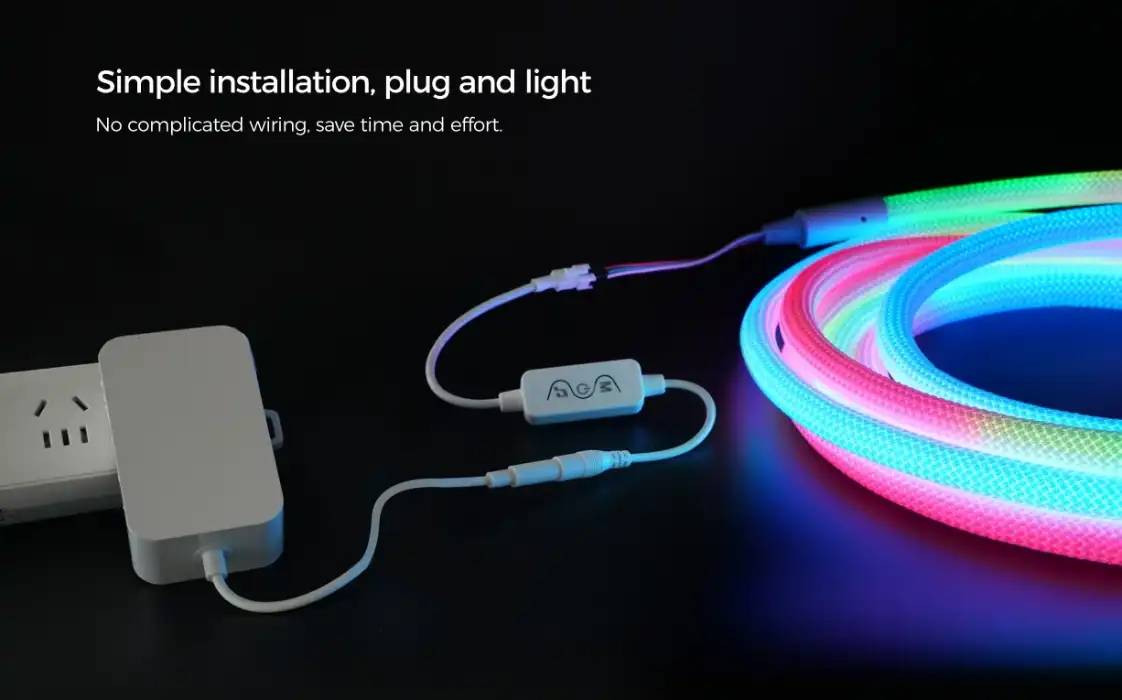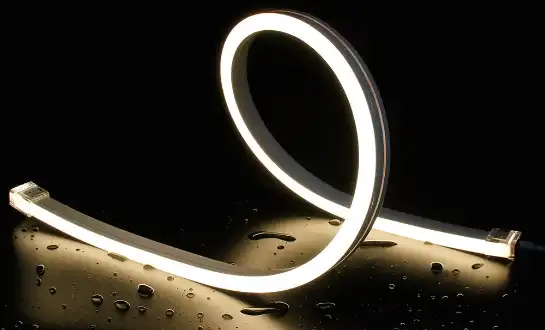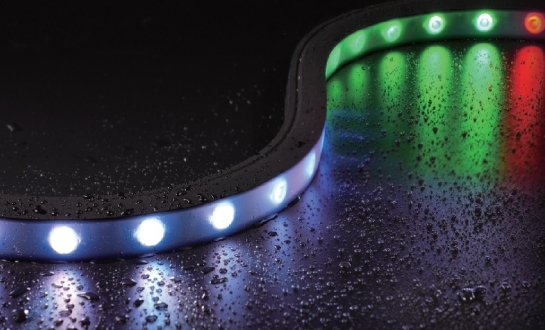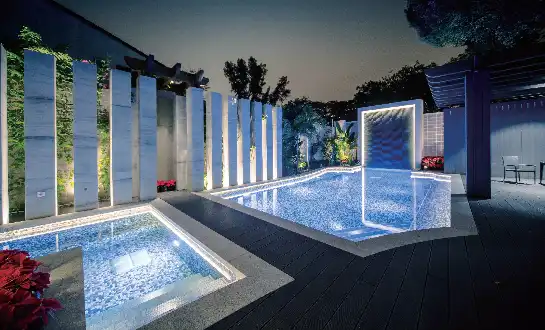Introducing Wi-Fi and Bluetooth Control for Flexible LED Strips
Flexible LED strips have revolutionized the lighting industry, offering versatile and energy-efficient illumination options for various applications. The integration of Wi-Fi and Bluetooth technologies has further enhanced their functionality, allowing users to control these vibrant light sources with unprecedented ease and convenience.
Wi-Fi-controlled LED strips connect to your home network, enabling remote access and control through internet-connected devices. This technology is ideal for larger installations or when you want to control your lighting from anywhere in the world. Wi-Fi controllers often support features like voice command integration with smart home assistants and scheduling capabilities.
Bluetooth-controlled LED strips, on the other hand, offer a more localized solution. They connect directly to your smartphone or tablet within a limited range, typically up to 30 feet. Bluetooth control is perfect for smaller setups or when you want a simple, direct connection without relying on your home's Wi-Fi network.
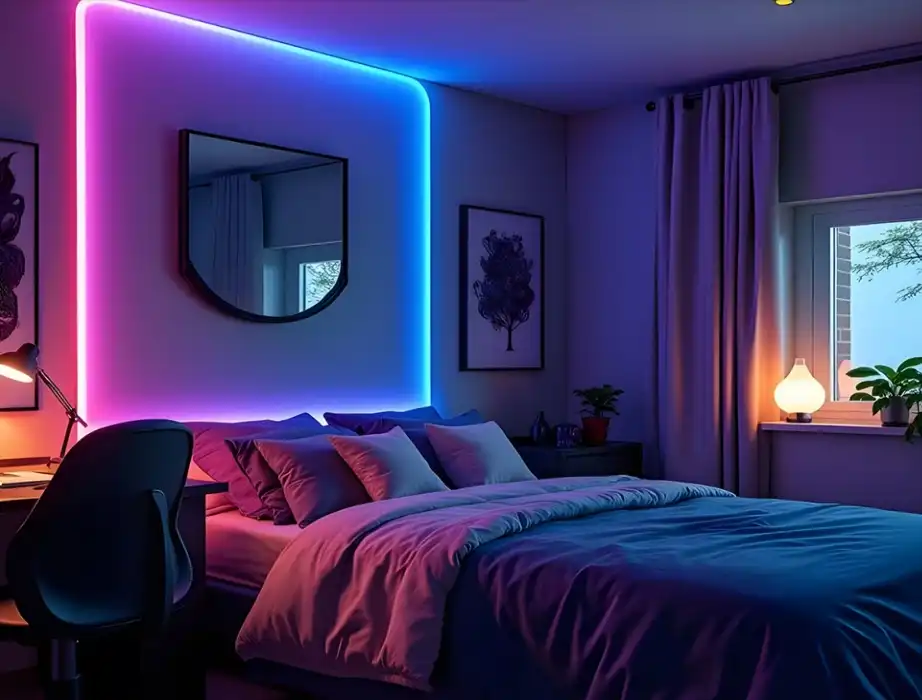
Advantages of Wireless Control for LED Strips
The adoption of wireless control for flexible LED strips brings numerous benefits:
- Convenience: Adjust lighting settings from the comfort of your couch or bed.
- Flexibility: Create and save custom lighting scenes for different moods or occasions.
- Energy Efficiency: Easily turn off lights when not in use or set schedules to optimize energy consumption.
- Seamless Integration: Incorporate your LED lighting into broader smart home ecosystems.
- Enhanced User Experience: Intuitive smartphone apps make controlling complex lighting setups simple and enjoyable.
Setting Up Wi-Fi Control for Your Flexible LED Strip
Implementing Wi-Fi control for your flexible LED strip involves a few key steps:
Choosing the Right Wi-Fi Controller
Select a Wi-Fi controller compatible with your LED strip's voltage and amperage requirements. Ensure it supports the features you need, such as RGB color mixing, dimming, or dynamic effects.
Installing the Controller
Connect your flexible LED strip to the Wi-Fi controller, ensuring proper wiring and power supply. Place the controller within range of your Wi-Fi router for optimal connectivity.
Configuring the Wi-Fi Connection
Download the manufacturer's recommended app and follow the instructions to connect the controller to your Wi-Fi network. This typically involves putting the controller in pairing mode and entering your network credentials.
Setting Up the App
Once connected, use the app to customize your lighting preferences. Explore features like color selection, brightness adjustment, and scene creation to make the most of your Wi-Fi-controlled LED strip.
Implementing Bluetooth Control for Flexible LED Strips
Setting up Bluetooth control for your flexible LED strip is generally a straightforward process:
Selecting a Bluetooth-Compatible Controller
Choose a Bluetooth controller that matches your LED strip's specifications and offers the desired functionality.
Connecting the Controller
Attach the Bluetooth controller to your flexible LED strip, ensuring proper power and data connections.
Pairing with Your Device
Enable Bluetooth on your smartphone or tablet, then use the manufacturer's app to discover and pair with the LED controller.
Customizing Your Lighting
Once paired, use the app to explore the various control options available for your Bluetooth-enabled LED strip. Experiment with color changes, dimming, and dynamic lighting effects to create the perfect ambiance.
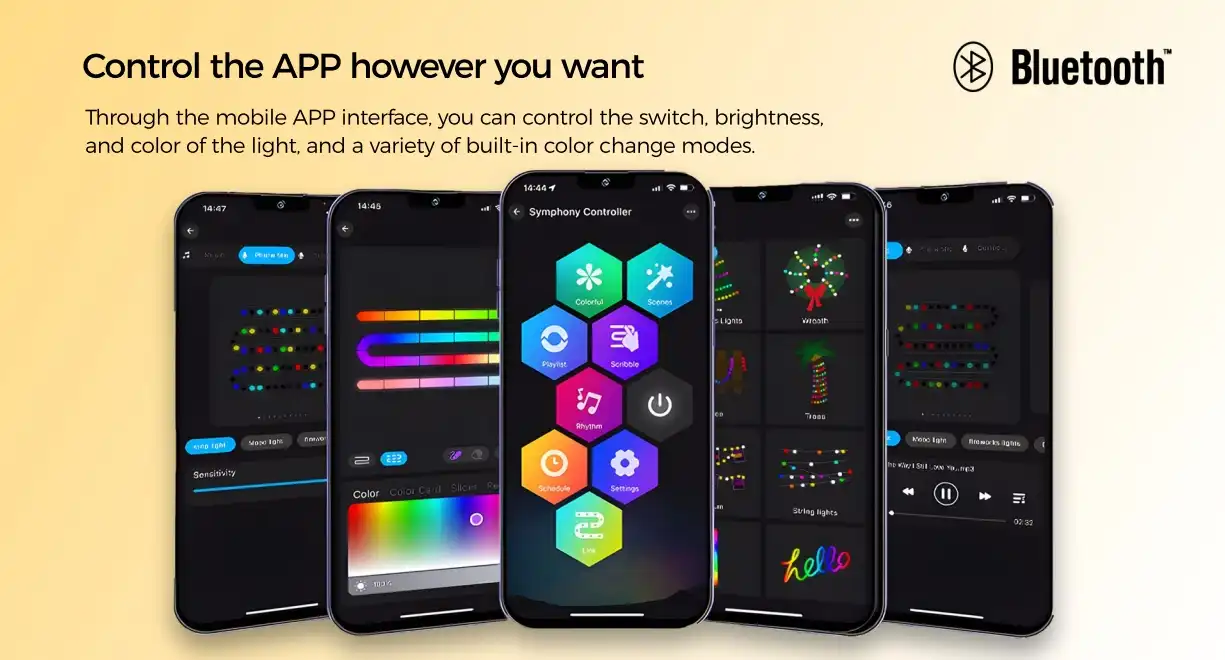
Advanced Features and Considerations
As you delve deeper into the world of wireless-controlled flexible LED strips, consider these advanced features and tips:
Voice Control Integration
Many Wi-Fi-enabled LED controllers support integration with popular voice assistants like Amazon Alexa or Google Assistant. This allows for hands-free control of your lighting, adding another layer of convenience to your smart home setup.
Music Synchronization
Some advanced controllers offer the ability to synchronize your LED strip's colors and patterns with music, creating an immersive audio-visual experience perfect for parties or relaxation.
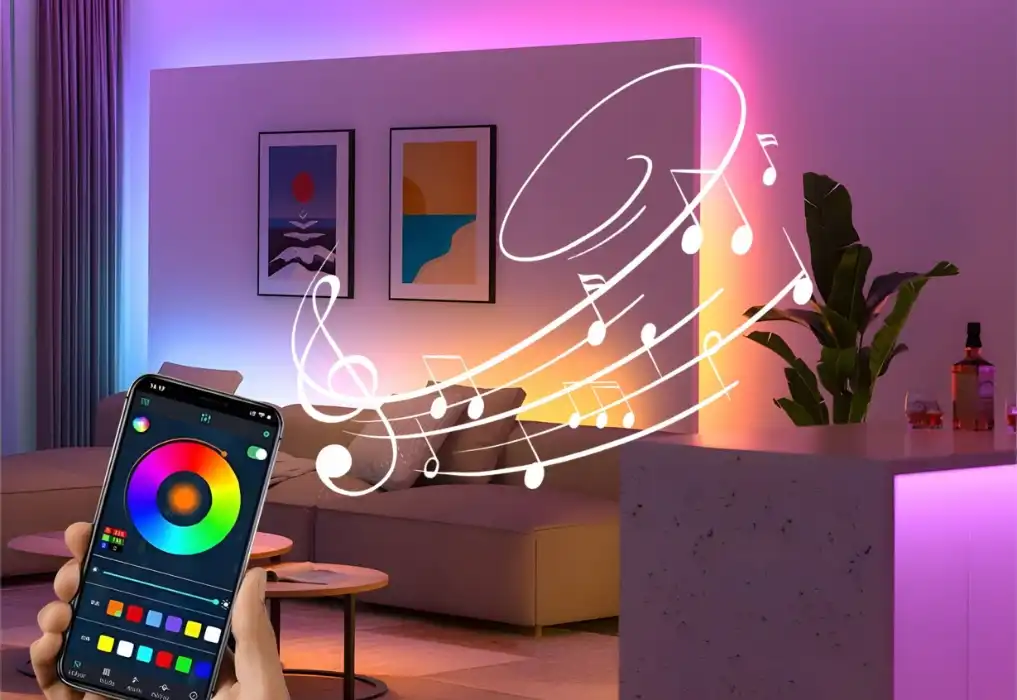
Expandability and Zoning
For larger installations, look for controllers that support multiple zones or the ability to link multiple controllers. This allows for more granular control over different areas of your space.
Security Considerations
When using Wi-Fi-controlled LED strips, ensure your home network is secure to prevent unauthorized access. Regularly update your controller's firmware to protect against potential vulnerabilities.
Troubleshooting Common Issues
While wireless control of flexible LED strips is generally reliable, you may encounter some common issues:
Connection Problems
If your Wi-Fi controller isn't connecting, try resetting it and ensuring your router is functioning correctly. For Bluetooth issues, check that your device's Bluetooth is enabled and you're within range of the controller.
App Glitches
If you experience problems with the control app, try closing and reopening it, or check for available updates. Sometimes, uninstalling and reinstalling the app can resolve persistent issues.
Lighting Inconsistencies
If your LED strip displays inconsistent colors or brightness, verify that all connections are secure and that you're not exceeding the controller's maximum supported strip length.
Conclusion
Wireless control of flexible LED strips via Wi-Fi or Bluetooth has opened up a world of possibilities for creative and convenient lighting solutions. Whether you're looking to enhance your home ambiance, create a dynamic workspace, or illuminate outdoor areas, these technologies offer unprecedented control and customization options. As you embark on your LED lighting journey, consider partnering with a reputable LED strip supplier or manufacturer to ensure you're getting high-quality, compatible products that will stand the test of time. With the right flexible LED strip solution, you can transform any space into a personalized lighting masterpiece.
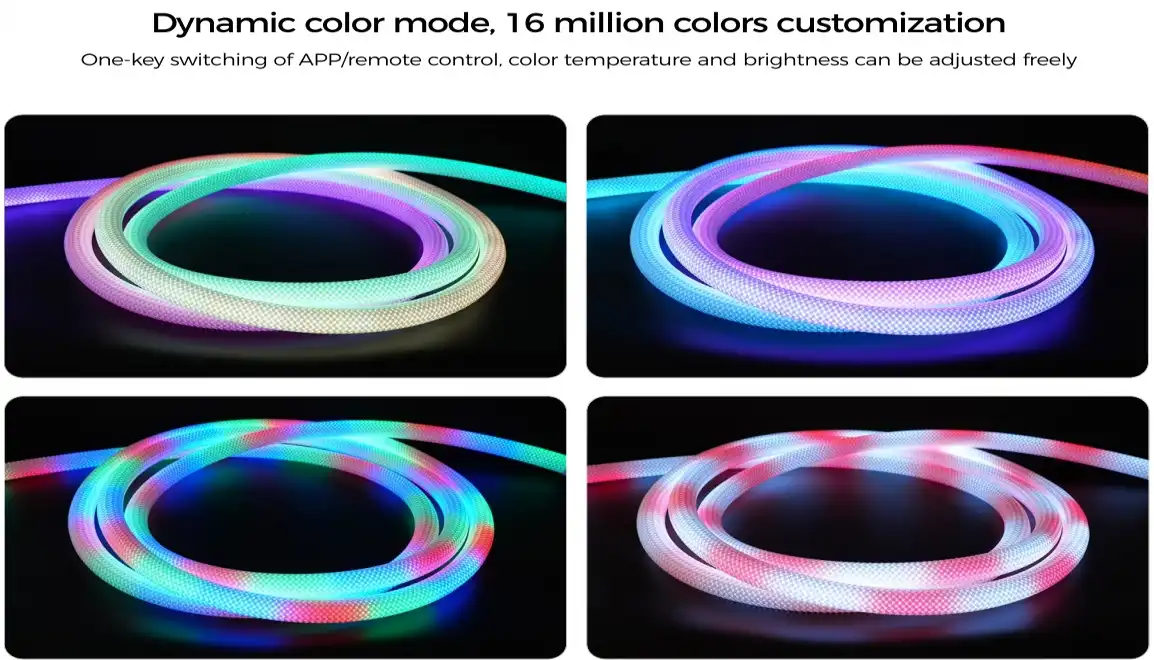
FAQ
Can I control multiple LED strips with one Wi-Fi or Bluetooth controller?
Yes, many controllers support multiple LED strips or zones, allowing for synchronized or independent control.
What's the range of Bluetooth-controlled LED strips?
Typically, Bluetooth control works within a range of about 30 feet, depending on obstacles and interference.
Are Wi-Fi-controlled LED strips secure?
When properly set up, Wi-Fi-controlled LED strips can be secure. Always use strong passwords and keep your controller's firmware updated.
Expert Flexible LED Strip Solutions | QUAN HE
At QUAN HE, we specialize in delivering top-tier flexible LED strip solutions tailored to your unique lighting needs. As a leading manufacturer with over a decade of experience, our ISO-certified facility and expert R&D team ensure unparalleled quality and innovation. From custom OEM/ODM services to comprehensive technical support, we're your one-stop shop for cutting-edge LED lighting. Experience the difference with our eco-friendly, durable products backed by UL, CE, and ROHS certifications. Ready to illuminate your space with precision and excellence? Contact us at Linda@uc-led.com to explore our flexible LED strip factory offerings and find the perfect lighting solution for your project.
source: LED Light

References
1. Johnson, A. (2022). "Smart Lighting: The Future of Home Illumination." Journal of Home Automation, 15(3), 78-92.
2. Smith, B. & Lee, C. (2021). "Wireless Control Systems for LED Lighting: A Comparative Analysis." IEEE Transactions on Consumer Electronics, 67(2), 112-125.
3. Garcia, M. (2023). "Energy Efficiency in Smart LED Lighting Solutions." Sustainable Technology Review, 8(4), 205-218.
4. Wong, R. et al. (2022). "User Experience in Wi-Fi and Bluetooth Controlled Lighting Systems." International Journal of Human-Computer Interaction, 38(9), 841-856.
5. Brown, D. (2023). "The Impact of Smart Lighting on Residential Energy Consumption." Energy and Buildings, 276, 112800.
